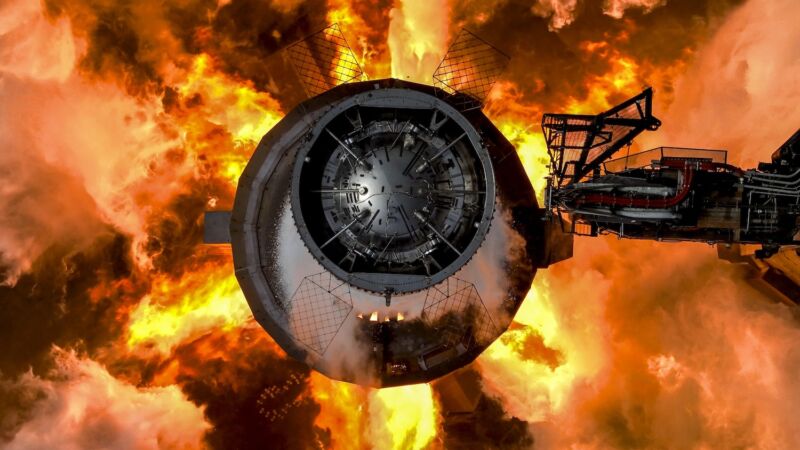
It’s still unclear how long SpaceX’s Falcon 9 rocket will stay on the ground as engineers investigate a rare launch failure last week, but the next test flight of the company’s next-generation Starship vehicle appears to be on the way. due to rise next month.
On Monday, SpaceX tested the 33 Raptor engines on the Starship rocket’s Super Heavy booster at the company’s Starbase facility in South Texas. The methane-fueled engines fired for about eight seconds, long enough for SpaceX engineers to verify the normal operation of all systems. At full power, the 33 engines generated nearly 17 million pounds of thrust, twice the power output of NASA’s iconic Saturn V Moon rocket.
SpaceX confirmed that the static fire test reached its full duration and crews drained methane and liquid oxygen from the rocket, known as Booster 12 in the company’s inventory of ships and boosters. The upper stage for the next Starship test flight, known as Ship 30, completed the static fire of its six Raptor engines in May.
During Starship’s fourth flight on June 6, SpaceX successfully guided the Super Heavy booster into a controlled descent into the Gulf of Mexico east of Starbase. The spacecraft continued into space and completed half a lap around the planet before re-entering the atmosphere for a directed propellant splash in the Indian Ocean.
This was the first time that SpaceX succeeded in bringing the booster and spacecraft close to the intended launch sites. The targeted water landing of the Super Heavy booster gave SpaceX officials the confidence to attempt to recover the booster on the next flight to Starbase, where the giant articulating arms — colloquially known as “sticks” — on the launch tower will try to catch the rocket as it slows to a halt just above the launch pad.
Kathy Lueders, SpaceX’s general manager at Starbase, told local residents last month that SpaceX was still considering whether to try to catch the booster on the next flight. The capture concept is bold and completely different from how SpaceX recovers Falcon 9 boosters, but SpaceX officials believe it’s the best way to recover boosters for rapid reuse. Earlier this month, SpaceX released a teaser video for the next Starship flight suggesting that a booster capture was back on the table.
Super Heavy Flight 5 booster full duration static fire pic.twitter.com/8rF9KUdMUD
— SpaceX (@SpaceX) July 15, 2024
SpaceX will also use Starship’s fifth test flight to test an improved heat shield on the shuttle, or upper stage, after re-entry heating damaged the vehicle during descent on its previous flight last month. Working inside a hangar not far from the launch pad, technicians are replacing thousands of ceramic tiles on the outer skin of Shuttle 30.
Once that work is complete, SpaceX will place the spacecraft atop the booster and can conduct a full countdown test a few days before the first launch attempt, which could happen as early as August.
Meanwhile, construction of a second launch pad at Starbase is underway. Construction crews have assembled the first few segments of the web launch tower a short distance from the existing Starship launch pad. Within a few years, SpaceX aims to have two active launch pads in Texas and two Starship launch sites in Florida to support an increasing Starship flight rate.
These Starship missions will launch Starlink Internet satellites, conduct in-orbit fuel tests and support NASA’s Artemis lunar program.